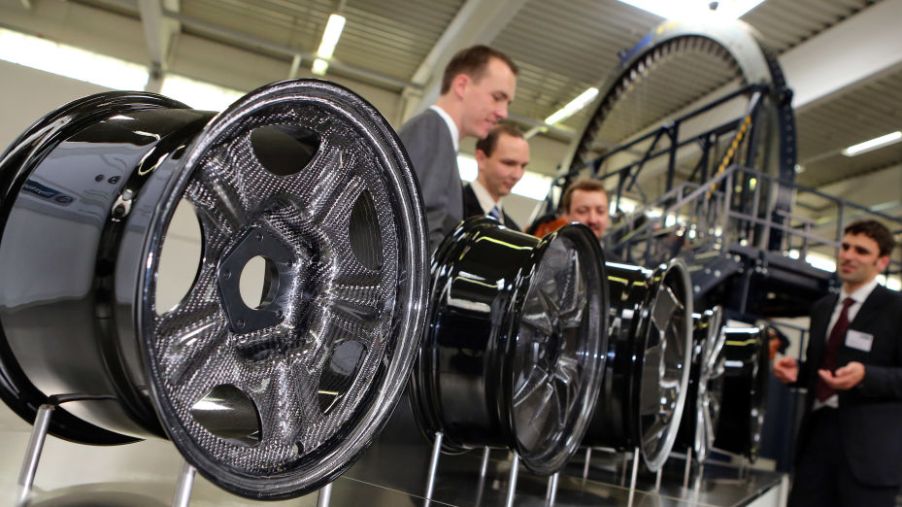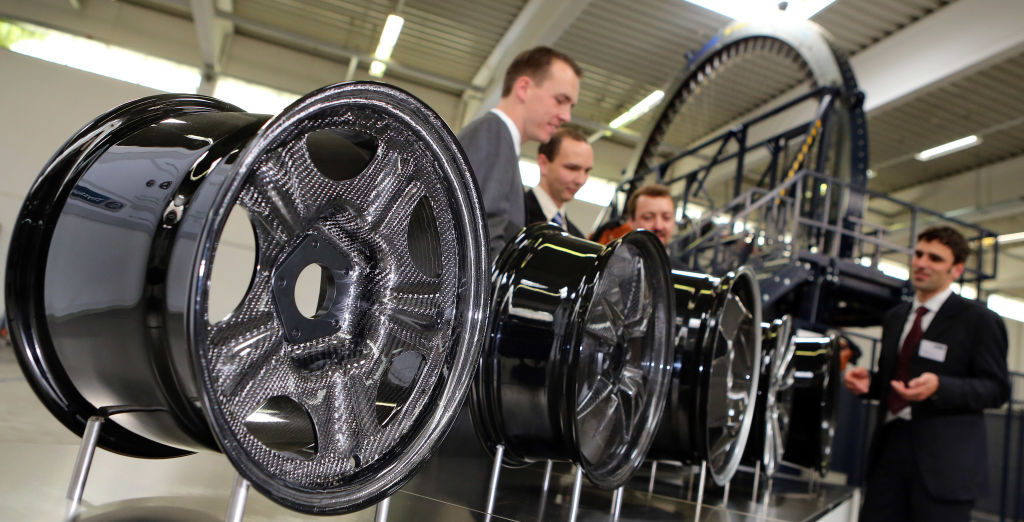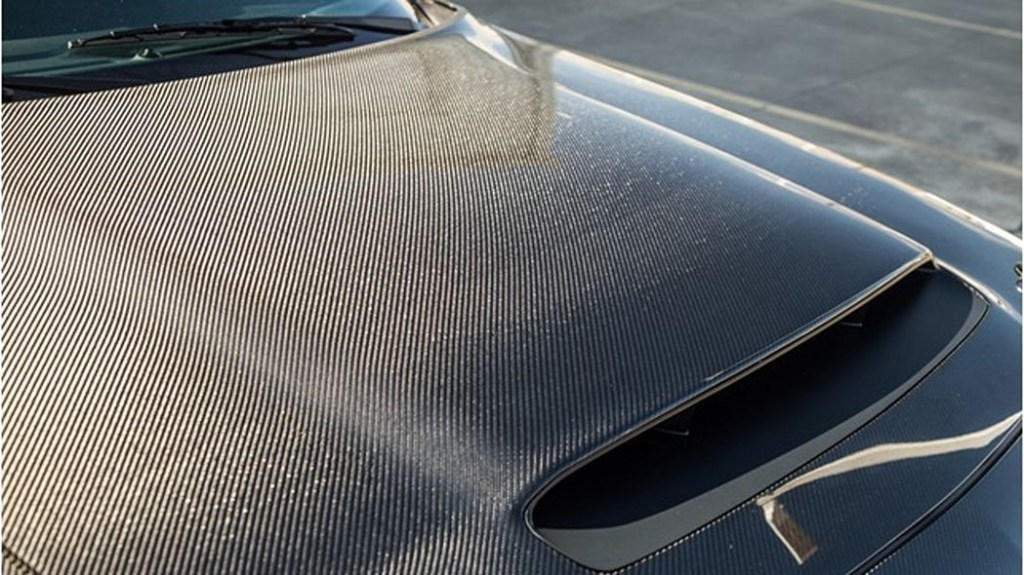
Why Do so Many Expensive Cars Use Carbon Fiber?
For building cars, metal is usually the go-to. The Tesla Cybertruck’s body is stainless steel, for instance. It’s strong but heavy. Aluminum is the metal of choice for cutting weight, as with Ford’s F-Series trucks, Bollinger’s chassis, and some of Morgan’s upcoming cars. Bugatti, too, once used aluminum body panels. However, some of the most expensive, fastest, most performance-oriented cars use a different material: carbon fiber. But, even though it’s now started to trickle down to cars like the BMW i3, truck beds, and even campers, it’s still pricey. Why is that the case?
What is carbon fiber?
First, it’s important to note that ‘carbon fiber’ isn’t just fiber. It’s actually, Cycle World explains, a composite, like concrete. Concrete is a mix of cement and steel rods. Replace the cement with resin, and the steel rods with carbon fibers, and you’ve got carbon-fiber-reinforced plastic. But it’s called ‘carbon fiber’ for short.
Carbon fiber, Gizmodo explains, is usually made from an acrylic-like plastic. The plastic, in sheets, gets passed through a series of high-temperature ovens. There, the strands undergo reactions that remove almost all their non-carbon atoms, and link together. What comes out of the oven is essentially a sheet of black, crystalline fibers.
To make something out of CFRP, Popular Mechanics reports, the usual process involves sheets of these fibers already coated with resin and adhesive. These ‘pre-preg’ sheets are arranged in a mold, and their individual fibers are woven together. Then, the whole thing is baked in another oven at high temperature and pressure.

This entire process takes a lot of time and energy. This means the ‘carbon fiber’ trim you have in your car might just be applique or a wrap. But the real-deal end products, to those who can afford it, have many benefits over their metal counterparts.
What makes it special?

For one, carbon fiber is extremely light. Carbon is one of the lightest elements in the world, with an atomic weight less than half that of aluminum. Car and Driver reports a Corvette body panel made of CFRP weighs 1/5th that of the equivalent steel panel. But low weight isn’t the only benefit carbon fiber provides.
A material’s strength is based on how it resists deforming when being compressed or pulled. CFRP is strong not just because of chemical bonds, but because it’s woven. In terms of raw numbers, a driveshaft made of carbon fiber is at least 3 times stronger than the equivalent steel one. Carfax reports some carbon fibers can be up to 10 times stronger than steel. This also means CFRP has a higher strength-to-weight ratio than any metal.
In addition, The Drive reports, carbon fiber is stiffer than steel. What this means is, in corners, a carbon-fiber vehicle will flex less than a steel or aluminum one. This keeps the wheels planted firmer onto the ground, increasing traction and speed. For high-end performance and racing cars, this is absolutely essential. It’s also why carbon fiber bicycles can be quite comfortable, even without suspension: they absorb bumps without disturbing the rider.
However, carbon fiber’s, well, strengths have some drawbacks. And the price is only one of them.
Why is carbon fiber expensive?
For one, as the video below demonstrates, CFRP isn’t actually strong in every direction.
It’s excellent at resisting pulling, or tensile forces. But metals still fare better under compressive forces. Also, while carbon fiber can be strong, it’s also brittle. If it cracks, it snaps rather quickly. In fact, Outside Magazine reports some carbon bicycle manufacturers were sued because of manufacturing flaws and cracks.
Then, there’s the price. Because making the fibers is so time-consuming and energy-intensive, as is the molding process, CFRP is much more expensive than steel. The Drive reports steel is roughly 10 times cheaper. However, CFRP products may be getting cheaper soon.
The GMC Sierra’s carbon fiber bed isn’t made with the traditional molding process. Instead, it’s made of ‘forged composites’, Car and Driver reports. It’s still CFRP. However, instead of using continuous layered sheets, the fibers are chopped up into small, 1” lengths. Lamborghini has actually helped pioneer the technology, Car and Driver reports, in its Sesto Elemento and Huracan Performante models.

Because the fibers are short, and the resin is a different formula, the curing and baking process is much shorter. The molds themselves are also cheaper. Whether or not this will finally get the material into truly affordable cars, besides just bits of interior trim, only time will tell.
Follow more updates from MotorBiscuit on our Facebook page.


